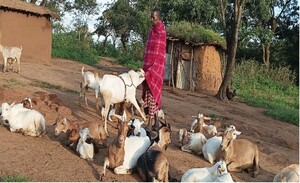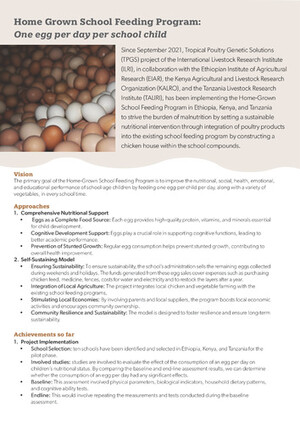
The epidemiology of tick-borne haemoparasites as determined by the reverse line blot hybridization assay in an intensively studied cohort of calves in western Kenya
Abstract
The development of sensitive surveillance technologies using PCR-based detection of microbial DNA, such as the reverse line blot assay, can facilitate the gathering of epidemiological information on tick-borne diseases, which continue to hamper the productivity of livestock in many parts of Africa and elsewhere. We have employed a reverse line blot assay to detect the prevalence of tick-borne parasites in an intensively studied cohort of indigenous calves in western Kenya. The calves were recruited close to birth and monitored for the presence of infectious disease for up to 51 weeks. The final visit samples from 453 calves which survived for the study period were analyzed by RLB. The results indicated high prevalences of Theileria mutans (71.6%), T. velifera (62.8%), Anaplasma sp. Omatjenne (42.7%), A. bovis (39.9%), Theileria sp. (sable) (32.7%), T. parva (12.9%) and T. taurotragi (8.5%), with minor occurrences of eight other haemoparasites. The unexpectedly low prevalence of the pathogenic species Ehrlichia ruminantium was confirmed by a species-specific PCR targeting the pCS20 gene region. Coinfection analyses of the seven most prevalent haemoparasites indicated that they were present as coinfections in over 90% of the cases. The analyses revealed significant associations between several of the Theileria parasites, in particular T. velifera with Theileria sp. sable and T. mutans, and T. parva with T. taurotragi. There was very little coinfection of the two most common Anaplasma species, although they were commonly detected as coinfections with the Theileria parasites. The comparison of reverse line blot and serological results for four haemoparasites (T. parva, T. mutans, A. marginale and B. bigemina) indicated that, except for the mostly benign T. mutans, indigenous cattle seem capable of clearing infections of the three other, pathogenic parasites to below detectable levels. Although the study site was located across four agroecological zones, there was little restriction of the parasites to particular zones.
Citation
Njiiri, N.E., Bronsvoort, B.M. deC., Collins, N.E., Steyn, H.C., Troskie, M., Vorster, I., Mwangi, T.S., Sibeko, K.P., Jennings, A., Wyk, I.C. van, Mbole-Kariuki, M., Kiara, H., Poole, J., Hanotte, O., Coetzer, K., Oosthuizen, M.C., Woolhouse, M. and Toye, P. 2015. The epidemiology of tick-borne haemoparasites as determined by the reverse line blot hybridization assay in an intensively studied cohort of calves in western Kenya. Veterinary Parasitology 210(1/2):69-76.










